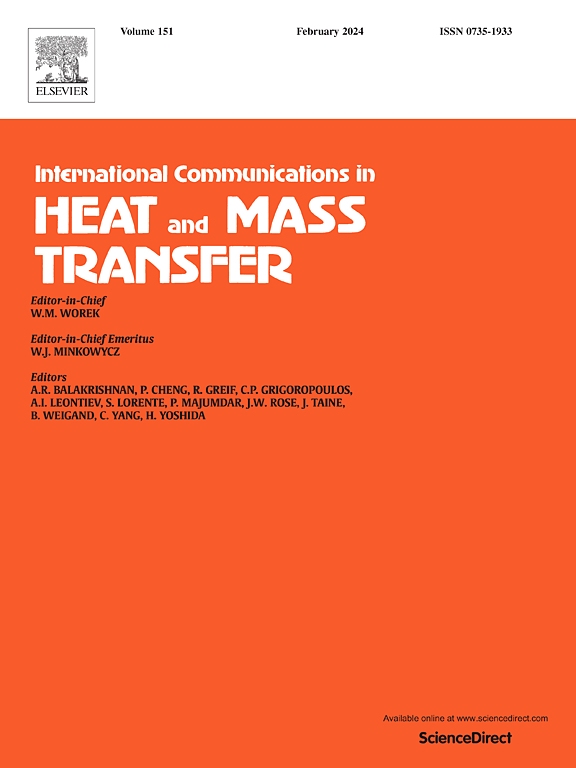Thermal control of power module in flight vehicles with intermediate thermoelectric conversion and supercritical methane cooling
IF 6.4
2区 工程技术
Q1 MECHANICS
International Communications in Heat and Mass Transfer
Pub Date : 2025-04-03
DOI:10.1016/j.icheatmasstransfer.2025.108919
引用次数: 0
Abstract
The heat dissipation of power module in the electrical servo system of high-speed flight vehicles faces enormous challenge. To improve the thermal performance of power module, a new thermal control method called Intermediate Thermoelectric Regulation with Active Cooling (ITERAC) is proposed combining the regenerative cooling and thermoelectric generator (TEG). In the ITERAC, a matrix composed of multiple TEGs is used as the heat transfer medium between the power module and the heat sink with serpentine cooling channel, and the supercritical methane (S-CH4) is as the coolant. The TEGs with controllable thermal resistance can adjust the heat transfer between power module and S-CH4, consequently, the temperature of power module and its uniformity can be regulated by the thermoelectric conversion. Based on this idea, a mathematical model of heat transfer and thermoelectric conversion among the power module, TEGs, and heat sink is established. The model is solved by a program calculation, and validated by comparing to the experiments with the same sandwich structure, by an average deviation of 2.58 %. The simulation results of ITERAC demonstrate that an efficient heat dissipation can be realized by the heat transfer enhancement from S-CH4, as well as an excellent control of the temperature and its uniformity of power module with the cooperation of TEGs. The controllable range of the temperature and its uniformity is enlarged with the increase of heat flux. Under the mode of identical adjustment of TEGs' load resistance, by tracking the maximum electric power output, an approximate optimal temperature uniformity can be achieved simultaneously and improved by 13.67 %. Furthermore, when the load resistance of each TEG is adjusted independently, the temperature non-uniformity of power module can be eliminated completely (ΔTchip = 0 K).
求助全文
约1分钟内获得全文
求助全文
来源期刊
CiteScore
11.00
自引率
10.00%
发文量
648
审稿时长
32 days
期刊介绍:
International Communications in Heat and Mass Transfer serves as a world forum for the rapid dissemination of new ideas, new measurement techniques, preliminary findings of ongoing investigations, discussions, and criticisms in the field of heat and mass transfer. Two types of manuscript will be considered for publication: communications (short reports of new work or discussions of work which has already been published) and summaries (abstracts of reports, theses or manuscripts which are too long for publication in full). Together with its companion publication, International Journal of Heat and Mass Transfer, with which it shares the same Board of Editors, this journal is read by research workers and engineers throughout the world.

 求助内容:
求助内容: 应助结果提醒方式:
应助结果提醒方式:


